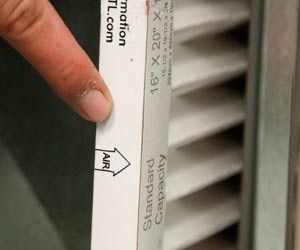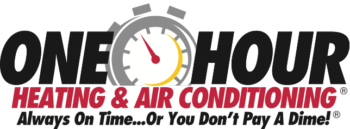There are some quick and easy things to check on your heating system when a snow storm hits. These may help you fix a problem with your furnace or heat pump if you have had an accumulation of snow or ice.
1. If you have a high-efficiency furnace, make sure that there is nothing blocking the vent on the outside of your house. Snow or ice can block the vent causing the furnace to malfunction.
2. If you are heating your home with a heat pump, make sure there is not an accumulation of ice or heavy snow on the outdoor fan. If you notice your heat pump having extremely long defrost cycles (like it is not able to keep up with the ice accumulation) or you notice any strange noises, just turn on the emergency heat so no damage is done to your heat pump.
3. Unhook any outdoor water hoses.
4. Make sure you are using a clean filter. A dirty filter will cause the HVAC system to run harder. Change your filter to make sure your heat will be running at full capacity during extreme temperatures.
High Efficiency Furnace Winter Snow Tip:
When we’re anticipating snow accumulation, and you have a high efficiency furnace, (it vents to the outside) you want to make sure the outdoor vent stays clear of snow or ice. Many times high efficiency furnaces are vented out the side of the house and depending on what kind of clearance you have over ground sometimes drifting snow can accumulate on on the pvc pipe on the outside.
Some 90% furnaces have an exhaust and air intake that just look like exposed pvc pipes two to three inch diameter. Others are called a concentric which has kind of a funnel-shape. Others have kind of a plastic cover where it’s more of what you would call a grill. All of them are set off of the outside wall and they draw air in the back side. If there is snow or ice blocking the back of the vent, it will not be able to vent properly.
In some cases the high efficiency furnace will discharge straight up out of the roof. These spots can also be blocked by snow or ice on the roof. (Please do not go on your roof, instead higher a professional.)
Heat Pump Winter Snow Tip
Snow and ice accumulation on primarily the top of the heat pump unit is something you want to avoid. Your heat pump has a defrost cycle to fight against this, but sometimes it cannot keep up. If there is a really wet, heavy snow ice can build up on the outdoor fan. If this happens you may hear a strange noise coming from the outdoor unit and notice the outdoor cabinet is shaking or vibrating.
You could also notice your heat pump defrost cycle coming on constantly or lasting longer than it should.
What should you do?
If you’re getting to a a place where you think there is ice out on the unit or you’re hearing it go through rather long defrosts cycles, it does not hurt a thing to just put your thermostat setting to the emergency heat mode. This setting will turn off the unit outside. It turns off the heat pump and turns on your supplemental heat. Your supplemental heat could be strip heat or electric heat or a natural gas furnace. It depends on your area what kind of supplemental heat you have.
Feel free to use the emergency heat for a couple of days especially when conditions are really extremely snowy and cold.
Change Your Filter for Maximum Heat
If you are expecting that your heat is going to be running non-stop during the next few days, go ahead and swap out that air filter. If it is dirty, it will make your HVAC system run harder than it needs to.
Give it a nice clean filter.

Which direction does your filter face?
When you change your HVAC Filter, the arrow always points toward the furnace.
Your system is now able to work at its maximum capacity. Plus, a dirty filter can cause your HVAC system to just completely malfunction so it’s always a good idea to make sure that you have a clean filter.
Unhook Your Outdoor Water Hoses During Freezing Temperatures
This is just a reminder but it’s a very real one: Make sure your outdoor water hydrants are free of any hose attached to them. This can cause serious water leaks and damage to your home.
I hope these tips help you stay warm! Below is the full video discussion where we go over all of the tips listed above.
